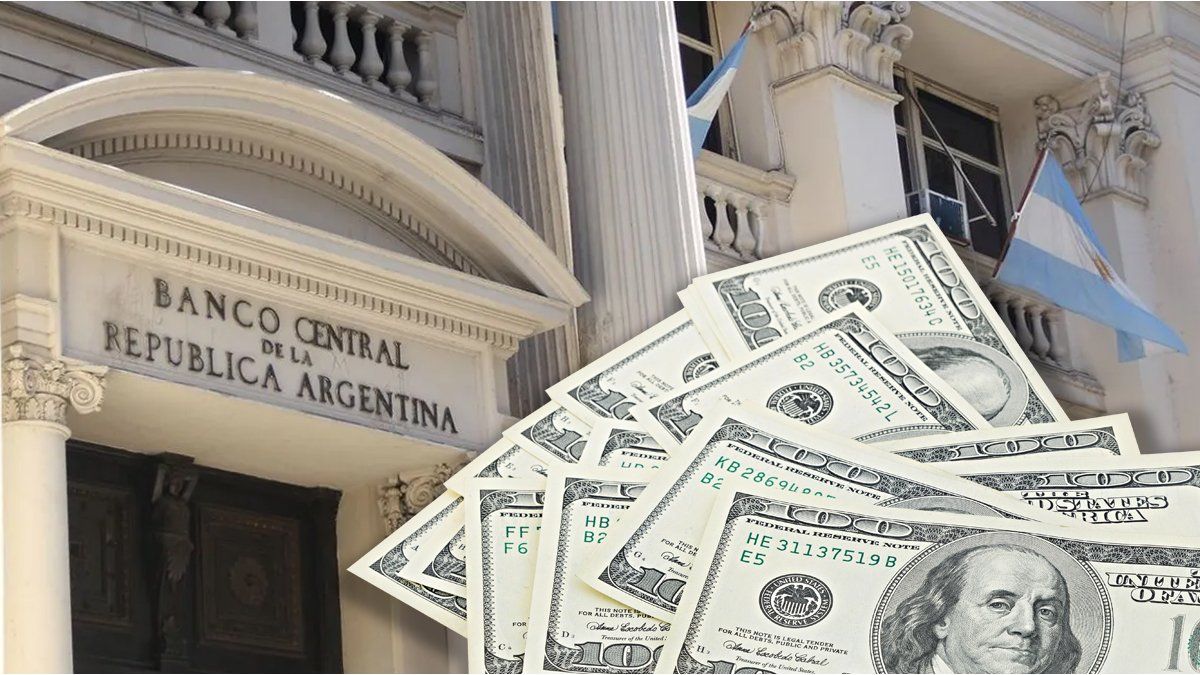Beyond the calm in the exchange rate that reflects the compression of the gap during the last few days, economic agents are concerned about the Central Bank’s adverse outlook for the accumulation of foreign currency. The data from the monetary authority, meanwhile, seem to confirm the City’s warnings about the difficulties the Government has in meeting the goal agreed with the International Monetary Fund (IMF).IMF) for September, as Ámbito reported. A presentation by Vladimir Werning, vice president of the BCRA, made it clear that US$1.5 billion in net reserves are missing to meet this commitment.
The number comes from one of the graphs that Werning displayed during his presentation last week at the 45th Annual Convention of the Argentine Institute of Financial Executives (IAEF), in Mendoza. In his presentation, entitled “Argentina’s stabilization program: the advance of the disinflationary process and the turning point in the economic cycle,” he referred to the issue of reserves and their relationship with market expectations, as reported by Ámbito, which was present at the event.
Now, the graph in question shows that As of July 30, net international reserves (NIR) had accumulated a growth of US$7.2 billion compared to December 10, 2023according to the calculations of the BCRA based on the methodology of the Fund. But the updated target, which was agreed upon in the last review of the program with the organization, establishes that by the end of this month the NIR They have to be placed above US$8.7 billion the level they had when Javier Milei took over.
werning reservations meta.jpg
That is to say, With only 30 days left until the end of the third quarter, they were US$1.5 billion below that target.. The data is not too far from the estimates that Ámbito reported this weekend: both LCG like the Provincial Bank They calculated that three weeks before the quarterly close, the BCRA is missing around US$2 billion to meet the net reserves goal. “It seems difficult to fulfill”said the consulting firm founded by Martín Lousteau.
What did the BCRA say about reserves?
As Ámbito reported, Werning referred to the issue during his presentation at the IAEF. He acknowledged that, although those objectives were initially exceeded, reserves then began to fall and that began to worry the market. In fact, So far this quarter, NIR fell by around US$4.5 billion“We have been stabilizing the economy without generating recurrent exchange rate jumps, whereas in the previous program, the rate of acceleration of the dollar was modified every month, but the real exchange rate was not maintained at a positive level,” he said.
“Now the market is nervous because it is counting ribs to see if the reserves are enough.“Meanwhile, we are offering dollars to the market to pay for imports, but we know that there will be no problem in paying the debt coupons for next year,” the official said.
The Government is betting on money laundering as a means of foreign currency inflow, which has already begun to be reflected in an increase in deposits, but its impact will be almost exclusively on gross reserves. On the other hand, the market sees that the level of net reserves will continue to be under pressure. As reported by Ámbito, the consulting firm 1816 calculated that they are currently negative by US$5.2 billionbut what That red could be doubled after the payment of principal and interest to bondholders, which will be made in January.
Higher import payments in the coming months due to the overlap of the new two-installment scheme with the old four-installment scheme, unfavorable seasonality for the settlement of agricultural dollars, and debt payments net of disbursements of US$1.1 billion in the remainder of 2024, will add pressure in the run-up to the expiration of the 2020 exchange bonds.
Since 1816 they considered that “Net reserves could reach the US$-10 billion mark in the second week of next year” (Bonares and Globales mature on January 9), practically double the current red, in case there is no external financing for the payment of those maturities. Luis Caputo says that he will not need to access the market until 2026 and that there will be a repo to face the amortization of the capital of the bonds during 2025, but for now there is no precision about this eventual financial operation.
The difference in criteria is reflected in a country risk that is still around 1,450 basis points. Also in what Werning’s own report recognizes: that there was a “temporary deviation of expectations”The BCRA vice president said that “the level of reserves does not show a relevant deviation but the market anticipated a reverse implementation of phase 2 and phase 3”, that is, that the accumulation of reserves would be prioritized first to open the exchange controls more quickly and then the emission taps would be closed.
Source: Ambito




